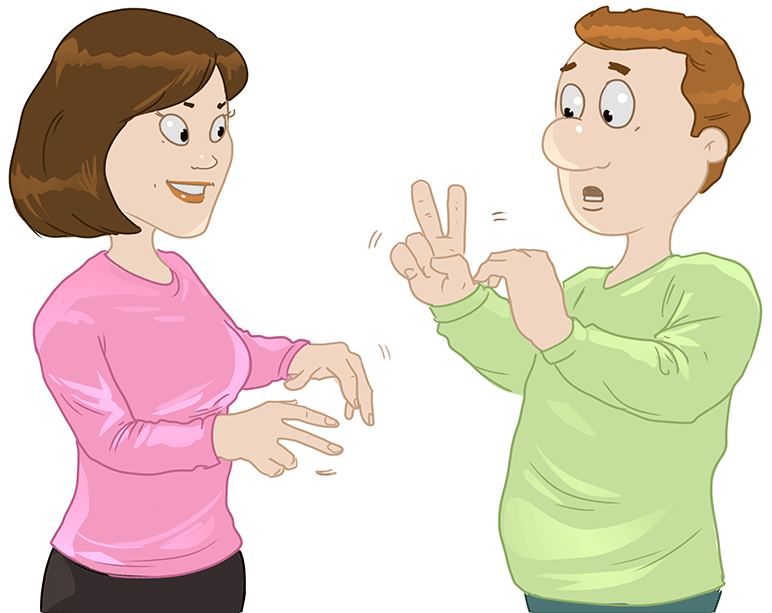Sign languages
"How to say it without words"
"How to say it without words"
There are a number of different types of communication systems that use gesture rather than the voice. However, here the focus will be on the natural sign languages of the Deaf. These are naturally evolving full languages which are different from both spoken languages and each other.
They need to be differentiated from artificial sign systems which are created by hearing people. These systems take some vocabulary from natural sign languages and modify it to mimic the structure of a spoken language. While these systems are useful in some limited contexts, they are awkward in extended use and Deaf people do not use them among themselves. Sign languages do not usually cross national or spoken language borders so, for example, British Sign Language and American Sign language are not mutually intelligible. Nonetheless, the grammars of natural sign languages are very similar to each other with the largest differences being found in the lexicon. This means that when necessary, sign language users can learn each others' languages very quickly.

The equivalent of words in sign languages are signs which are made up of three main components.
Just as words in spoken languages can be described as combinations of a limited number of consonants and vowels, signs in sign languages are combinations of a limited number of handshapes, locations and movements. Typologically, the grammars of sign languages combine features that are both common in spoken languages but which do not usually co-occur. On the one hand they are largely analytic and depend on sign order. Sign languages are basically SVO, but with some flexibility. On the other hand they have very rich morphology which is only sometimes applied.
Morphology in sign languages is mostly based on two processes.
One of these is reduplication (repeating all or part of a sign). In many sign languages nouns can be made from verbs by reducing and repeating the movement, so that SIT means 'to sit' and SIT-SIT means chair.
The other process is internal modification. This means that one component of the sign changes while other parts don't. Some verbs, for example, can show the subject or object through the direction of movement. At other times, verbs can indicate information about number by changing the handshape.
These two processes can be combined. Adjectives in ASL for example have up to 12 different aspectual forms made by modifying the speed and manner of movement along with the number of repitions.
But sign languages are also about a lot more than hands. Non-manual elements such as facial, head and shoulder movements are an integral part of sign language grammars and mark types of sentences and different parts of sentences like relative clauses. Sign languages are no easier to learn than spoken languages but they are very rich and expressive languages well worth the time and effort. They are also a lot of fun.